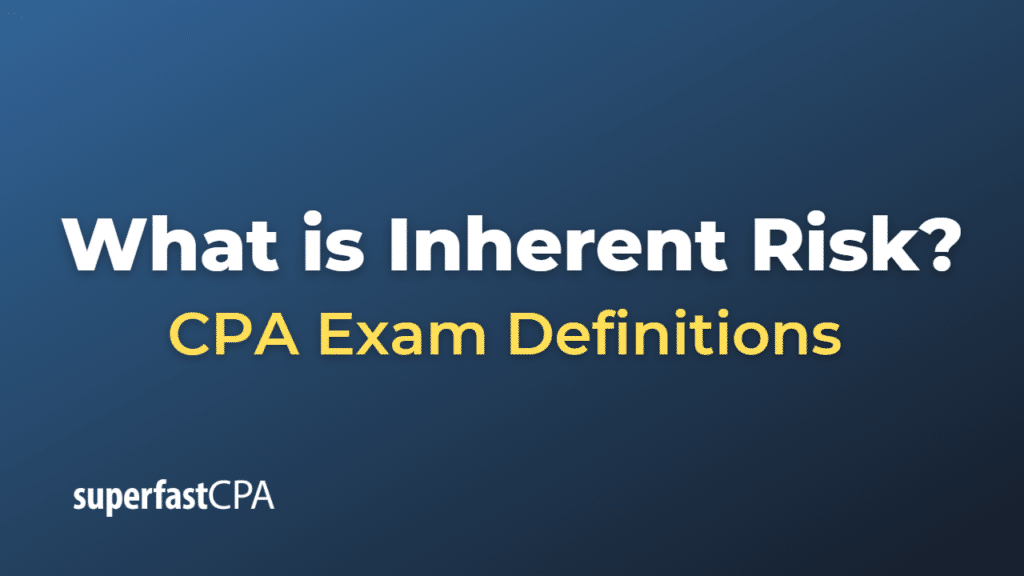Inherent Risk
Inherent risk is the risk posed by an error or omission in a financial statement due to factors other than a failure of controls. These risks often exist because of the nature of the business itself or the environment it operates in, and they are typically out of the control of the organization.
Inherent risks are present in all activities and can never be eliminated completely. They can arise due to various reasons such as technological changes, consumer preferences, regulatory changes, market competition, etc.
In the context of auditing, inherent risk is the susceptibility of an account or disclosure to a material misstatement, assuming there are no related controls. Auditors must assess the inherent risks during an audit and then design their testing procedures to detect any material misstatements that could arise from those risks.
For example, a business operating in a highly regulated industry such as pharmaceuticals or financial services may have a high level of inherent risk due to the complex regulations that govern these sectors. Similarly, a company with operations in multiple countries might have higher inherent risk due to the complexities of managing and consolidating accounts across different jurisdictions and currencies.
It’s important for businesses to identify and understand their inherent risks so that they can take appropriate actions to manage these risks, for instance, through insurance, risk transfer, or by implementing effective internal controls.
Example of Inherent Risk
Let’s consider an example of a pharmaceutical company developing a new drug.
The inherent risk is high in this scenario because of several factors.
- Scientific Uncertainty: The drug development process is inherently risky and uncertain. Despite extensive testing and research, there’s a chance the drug may not work as expected or could have unforeseen side effects.
- Regulatory Risk: Even if the drug is successful in trials, it must still be approved by regulatory bodies like the U.S. Food and Drug Administration (FDA). This approval process is rigorous and there’s no guarantee the drug will be approved.
- Market Risk: Once the drug is approved and ready to be marketed, there’s a risk that it may not be as widely accepted or as profitable as anticipated. This could be due to competition, pricing issues, healthcare policies, or changing consumer preferences.
- Litigation Risk: Pharmaceuticals are often the target of lawsuits, whether for alleged side effects, patent disputes, or other issues. This can lead to significant legal costs and potential damages.
These are inherent risks because they are a normal part of doing business in the pharmaceutical industry. They exist independent of the internal controls the company may have in place and cannot be eliminated, only managed and mitigated. Thus, the company would need a robust risk management strategy to anticipate and deal with these inherent risks, which might include securing appropriate insurance coverage, investing in comprehensive research and testing, maintaining a diverse portfolio of products, and ensuring compliance with all regulatory requirements.













